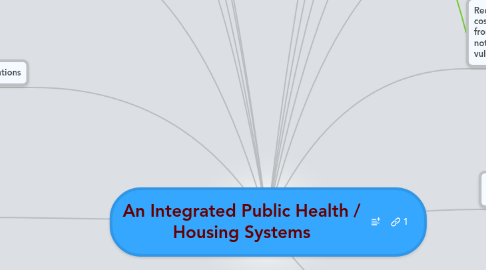An Integrated Public Health / Housing Systems
by Steve Morgan


1. Contribution to QIPP programme
1.1. Cost/Savings
1.2. Innovation
1.3. Productivity
2. Home from hospital: a partnership approach
3. Work with Housing Associations
3.1. Influence on health outcomes
3.2. Work in most deprived areas - people most likely to present at a later stage of their illness - and increased chance of readmissions
3.2.1. Higher Mortality
3.3. £315 Million saved form investments in health and social care budgets
3.4. Offer preventative services
4. An integrated health and social care IT system - Although not new -See the Torbay Trust - HSJ article
4.1. Barriers - Linking the datsets
4.1.1. The divide between primary and secondary care in the NHS, and also that between health and social care.
4.1.2. NHS management culture often talks about innovation yet demonstrates a fundamentally 'permission-based' and ‘risk averse’ approach
4.1.3. The absence of a robust shared electronic patient record
4.1.4. Policy barriers to integrated care
4.1.5. Are Social Services and Housing integrated (I think no) - See article
4.2. Data Sources - See notes
4.3. Shining a light on the lack of current capacity and capability in community services to deliver care co-ordination and more intensive care in the home environment.
4.4. Innovative approaches are needed to sharing data together with a commitment to developing shared clinical records.
5. Facilitating Hospitals Discharge
6. Providing independent living - Improved Psychology welfare
7. Integrated Care Pathways
8. Avoid hospital admissions related to poor housing
8.1. Asthma
8.2. Stroke
8.3. COPD
8.4. CHD
8.5. Mental Health
8.5.1. HonOS Pbr system - contribution of housing
